21st Century Skills
Twenty-first century learning and innovation skills fuse the three Rs and four Cs (critical thinking and problem solving, communication, collaboration, and creativity and innovation) (p21, 2014). As the United States global economy demands creativity and innovation, learning and innovation skills increasingly are being recognized as the skills that separate students who are prepared for increasingly complex life and work environments from those who are not. A teaching and learning focus on creativity, critical thinking, communication and collaboration is essential to prepare students for the future.
Creating Links between Standards-based Teaching and Learning and 21st Century Skill
National and state academic standards are content and performance based standards. Through Defined STEM, educators are able to help students achieve proficiency in academic standards through "real world" applications of content and performance. The content and performance task strongly align academic standards with twenty-first century learning and innovation Skills. The experiential learning opportunities require students to problem solve and think critically while applying the content and skills of the academic standards. Students can work individually, in small groups and/or in large groups thus increasing the opportunities for communication and collaboration. The experiences encourage the students to be creative and innovative in their thinking.
"Creativity as the process of having original ideas that have value. Creative work in any field often passes through typical phases. Sometimes what you end up with is not what you had in mind when you started. It's a dynamic process that often involves making new connections, crossing disciplines and using metaphors and analogies.
Creativity is about fresh thinking. It doesn't have to be new to the whole of humanity - though that's always a bonus - but certainly to the person whose work it is. Creativity also involves making critical judgments about whether what you're working on is any good, whether it's a theorem, a design or a poem". (Robinson, 2012)
Beneficial Resources:
- Partnership for 21st Century Learning and Innovation Skills. (2014). Partnership for 21st Century Skills. Available through: https://www.p21.org/.
References:
- Partnership for 21st Century Skills. (2014). Retrieved on December 23, 2010 from: https://www.p21.org/.
- Robinson, K. (2013, May 17). To encourage creativity, Mr. Cove, you must first understand what it is. The Guardian. Retrieved October 19, 2014, from: https://www.theguardian.com/commentisfree/2013/may/17/to-encourage-creativity-mr-gove-understand
Performance Tasks: Introduction
The performance task can serve as an authentic project that can be utilized by taking into consideration the many different ways that students learn. Each performance task provides many opportunities for students to demonstrate understanding. Since the "one size fits all" classroom minimizes student success, both the performance task and associated content have been designed to provide opportunities for all learners based upon the teacher's knowledge of his/her students. Supporting the performance task are videos, simulations, and learning connections meant to support mixed ability levels, interests, and foundational knowledge

Performance Tasks: Big Idea/Essential Questions
The performance task is based upon the G.R.A.S.P.S. template utilized as part of the "Understanding by Design" framework. The task can guide instruction and allow the educator to serve as facilitator or the task can serve an activity that allows students to demonstrate understandings through relevant utilization of standards-based content, concepts, and skills. Performance tasks are aligned with Essential Questions and associated Big Ideas that consider student knowledge and understanding.

Performance Tasks: Goal
Each performance task begins with a Goal. The goal provides the student with the outcome of the learning experience and the contextual purpose of the experience and product creation.

Performance Tasks: Role
The Role is meant to provide the student with the position or individual persona that they will become to accomplish the goal of the performance task. The majority of roles found within the tasks provide opportunities for students to complete real-world applications of standards-based content. The role may be for one student or in many instances can serve as a small group experience. Students may work together or assume a part of the role based upongroup dynamics. These roles will require student(s) to develop creative and innovative products demonstrating their understanding of the content through the application of the content and a variety of skills across disciplines.

Performance Tasks: Audience
The performance tasks contain an Audience component. The audience is the individual(s) who are interested in the findings and products that have been created. These people will make a decision based upon the products and presentations created by the individual(s) assuming the role within the task.

Performance Tasks: Situation
The Situation provides the participants with a contextual background for the task. Students will learn about the real-world application for the task. Additionally, this section builds connections with other sections of Defined STEM. This is the place that may invite students to consider various video resources, simulations, language tasks, and associated websites when appropriate. This section of the performance task will help the students connect the authentic experience with content and concepts critical to understanding.

Performance Tasks: Products
The Products within each task are designed using the multiple intelligences. The products provide various opportunities for students to demonstrate understanding. Based upon each individual learner and/or individual class, the educator can make appropriate instructional decisions for product development. These considerations may include:
- having a student complete all products within a task;
- having students complete a number of products based upon content application and/or student interest;
- having a student complete certain products based upon the educator's decision to maximize content, concept, and skill application;
- having student work as part of a cooperative group to complete a product or the products; and/or
- having students complete products based upon the strength of their multiple intelligences.
Each task contains between four and six products for development consideration. The products are meant to provide students with experiences aligned with 21st Century Learning and Innovation Skills. Additionally, each task contains at least one product that requires the utilization of a technology-based experience. This provides the student with experiential learning opportunities based upon software and web resources and the application of these tools to demonstrate their knowledge and understanding. The products provided within each task are closely aligned with the multiple intelligences and the set of products within the task will help educators meet a number of multiple intelligences.
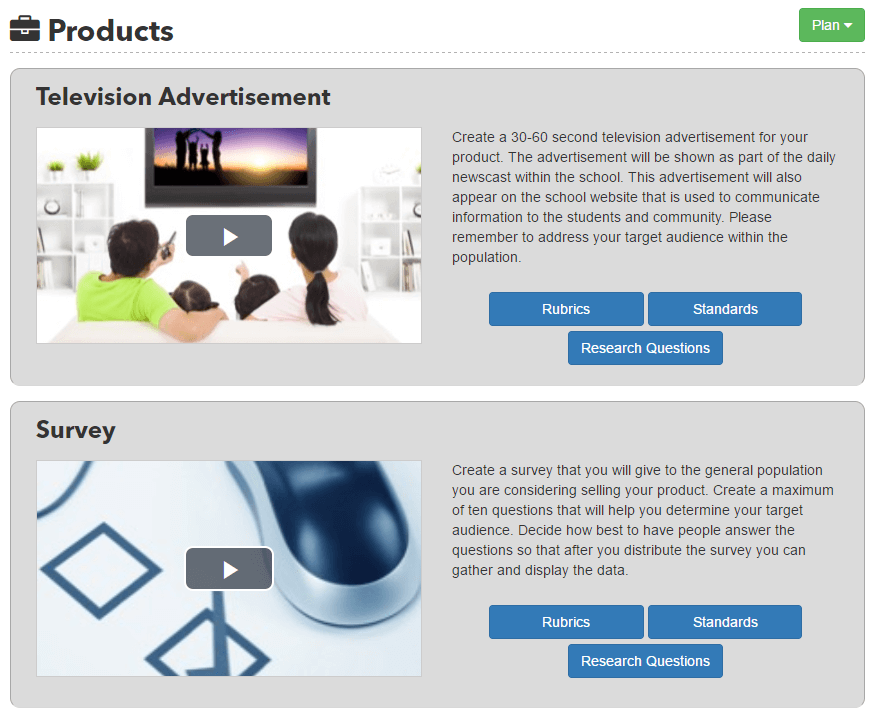
Performance Tasks: Product Videos
The product videos are 2-3 minute videos provided within every product of a performance task. They are specific to each product within the task and act as a guide for teachers and students working through a product. These product videos reinforce the student role, the goal of the task, and connect these to the concepts and skills that will be utilized to produce the product. The videos help generate ideas for ways students can begin the work of researching, analyzing, and synthesizing information to create a product.
Performance Tasks: Rubrics/Anchors
Rubrics and Anchors are present for each of the products within the task. This can help the educator communicate what is to be created and a general sample of the product. All rubrics are designed on a 1-4 scale and exemplars are present at the 3 and 4 level. The rubrics present are product rubrics. Educators can add appropriate traits related to standards-based content. Through the technology within Defined STEM, educators can manipulate each rubric as they desire.
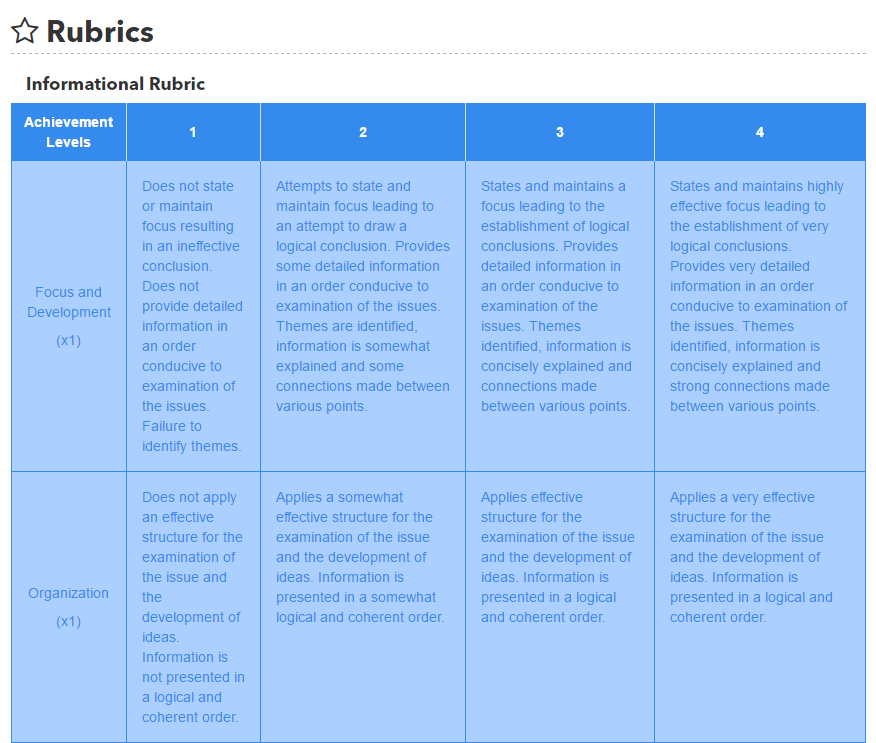
Performance Tasks: Student Learning Objects
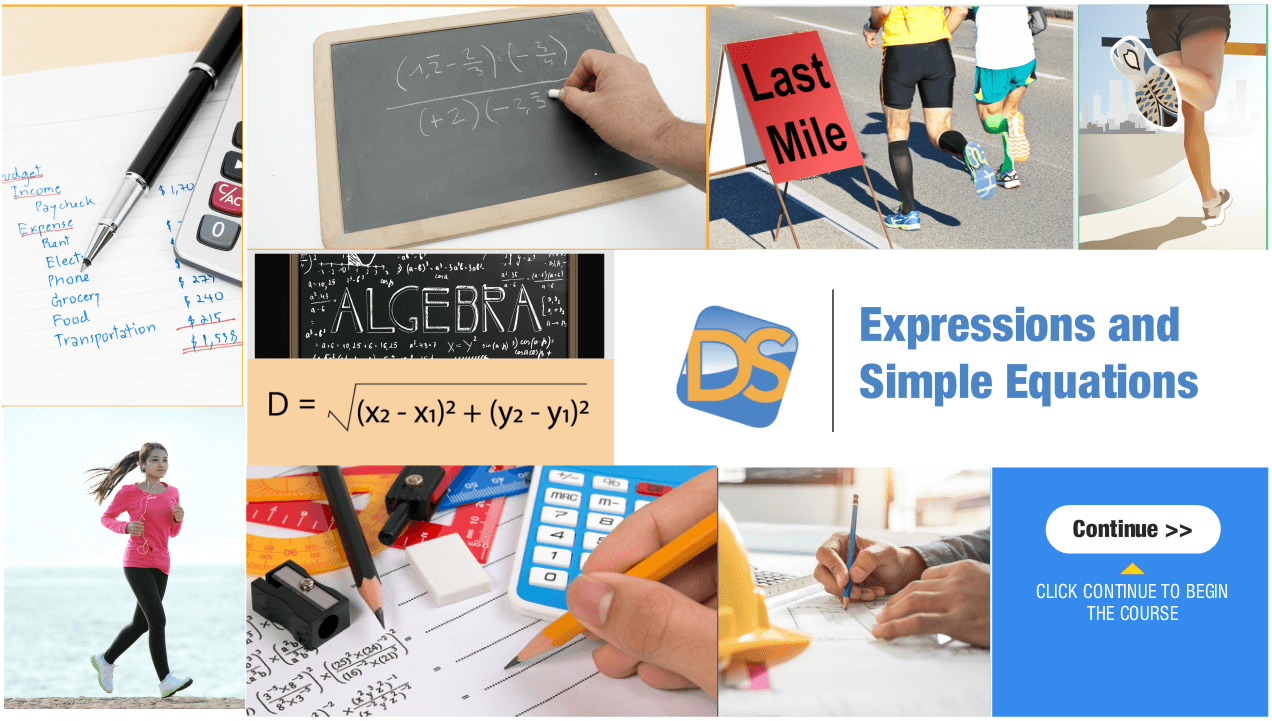
Video Library
The video library contains a collection of Career, Applied Mathematics, and Performance Task Process videos that students may use in conjunction with a Defined STEM task or independently.
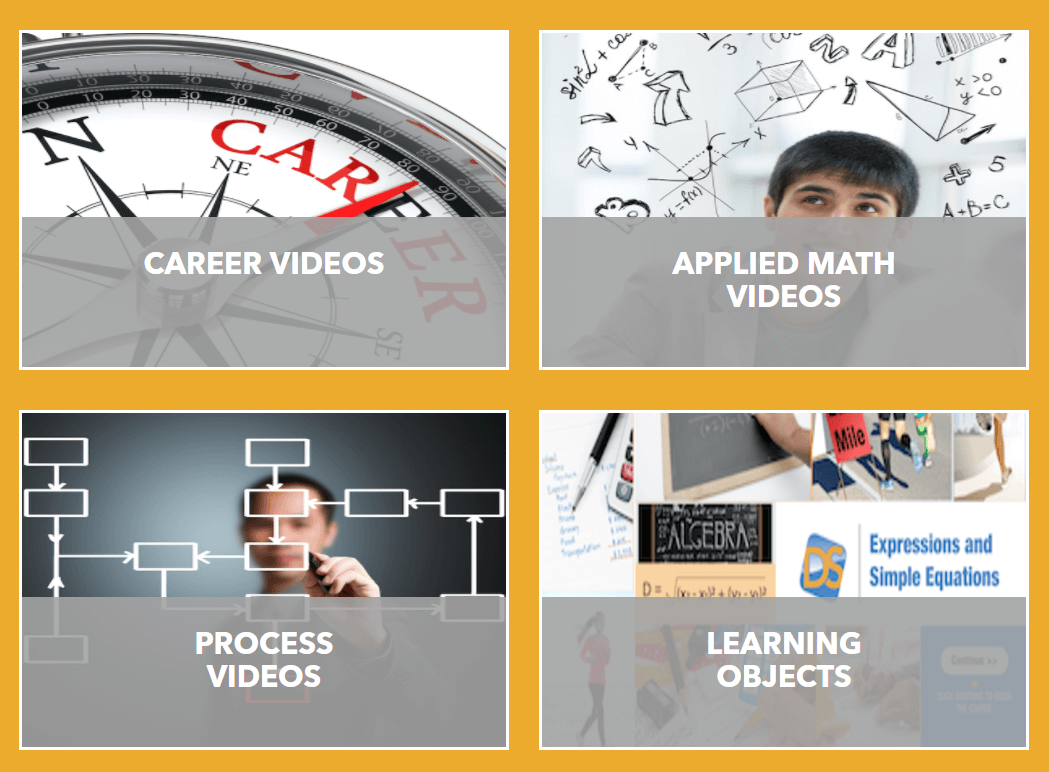
Teaching with Performance Tasks
The performance Task process videos are a series of three videos intended for students and teachers. These videos walk viewers through a suggested process of completing a performance task.
Literacy Tasks: Overview
The language tasks are designed to allow students to produce narrative writing pieces that are connected with content areas and relevant issues. The tasks provide online informational and argumentative resources for students to review prior to engaging in the writing process. All of the language tasks are designed using a similar template. Two types of language tasks are present. The tasks are either informational or argumentative. Each task contains a scoring guide aligned with the Common Core College and Career Anchor Standards for Reading and Writing.

Literacy Tasks: Task Structure
The language task begins by providing the student with a Background of the topic
to be considered. The first paragraph is designed to set the stage with a brief
description of the content and the ideas to be brought forth through the learning
experience.
The second paragraph contains a number of questions based upon the provided
resources. Each question asks the student to consider the information provided
within the resources. Students can use these questions and the answers to the
questions to help focus their writing. The questions provide the educator with a
good measure to determine completion of the assigned reading and knowledge of
student comprehension of what was read and the content within the reading.
The third paragraph reiterates the content and topic to be considered. It
additionally provides the students with an idea to consider that extends the topic
being discussed.

Literacy Tasks: Language Prompt
The Language Prompt contextualizes the writing to be completed. The student is
asked to write a technical report (Informational) or a position paper
(Argumentative) with the audience that the student is writing for provided.
The informational tasks ask the student to consider the evidence provided within
the research and the implications that can be drawn from the findings. The
completed product provides the student with deeper knowledge of the content and
real world applications for the content and concepts. The teacher can set the
parameters for the writing based upon student knowledge, skills, writing ability,
and grade level.
The argumentative tasks ask the students to consider a topic and determine their
point of view. Most tasks ask the student to support or reject an idea or choose a
side to a debate. The students are asked to use the research to support their
discussion and point of view. They are also asked to consider the potential
implications from their decision. The teacher can set the parameters for the writing
based upon student knowledge, skills, writing ability, and grade level.

Literacy Tasks: Resources
Each language task contains a number of Resources that might include newspaper articles, scientific journals, magazine articles, periodicals, text-based web resources, and governmental products. Each task typically has between five and eight different resources. The resources are designed to provide a variety of depth and reading level to meet the needs of most learners. Educators may choose to use all of the resources provided or they can choose a number of resources that best meet the needs of the student. Questions within the background are designed to encourage the student to consider certain points and ideas within each resource.
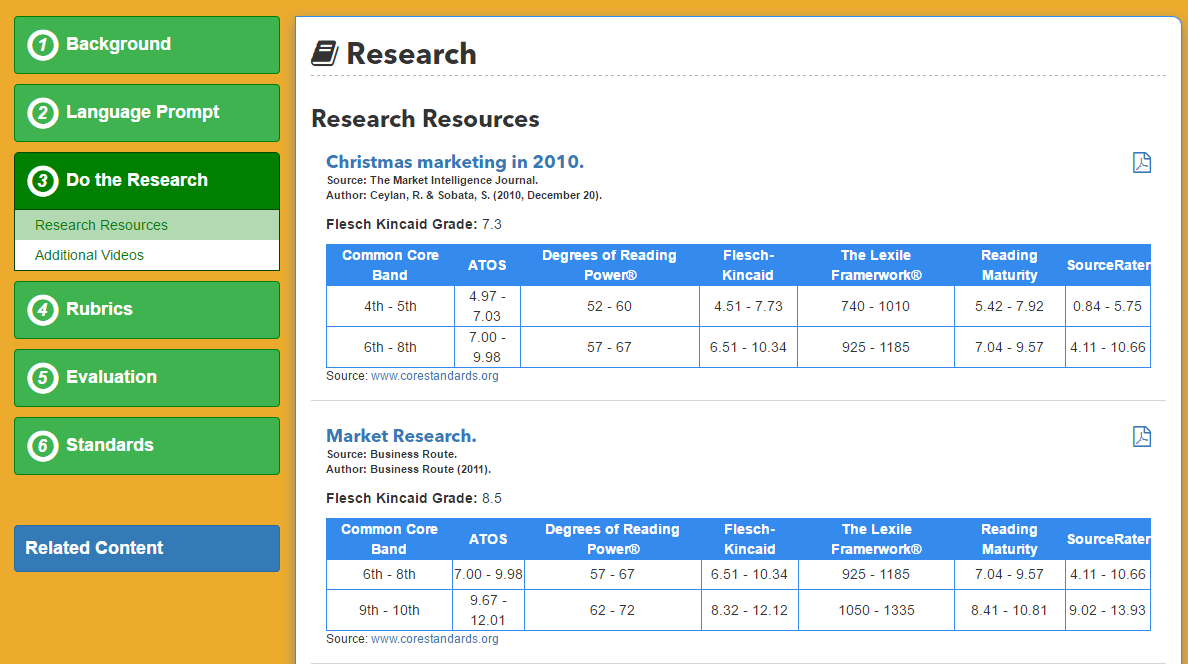
Literacy Tasks: Tier Three Vocabulary
Following the resources section are Tier Three Vocabulary words. These words are specific to each content area and are words that can be found within the provided resources. These words are best learned when a specific need arises and the provided vocabulary can assist the student with content-based comprehension.

Literacy Tasks: Rubrics
All language tasks are connected to one of two Rubrics that have been developed based upon the Common Core standards for writing. The rubrics are Argumentative or Informational based upon the task being completed. The rubrics may be used as they stand or can be adapted through the technology available with the Defined STEM website. Achievement levels and point totals can be added as needed. The students will become familiar with the rubrics as they complete more tasks. This familiarity should help the students become better writers while focusing on content-based reading and writing that deepens their content understanding.

Literacy Tasks: Constructed Responses
Constructed Responses are non-fiction reading and writing experiences connected to content in all subject areas and geared toward students in grades K-6. Constructed responses can be used to enhance and complement the work students do in a performance task or they can be used as stand-alone activities. Within a constructed response task, students are asked to read a non-fiction stimulus and respond to a prompt using evidence from the reading to support their writing.
In grades PK-2, constructed responses can be completed orally as an option for differentiation. For every constructed response task in grades 3-6 there is a 3rd/4th grade readability version and a 5th/6th grade readability version provided. These separate versions allow teachers the flexibility to meet students' needs.
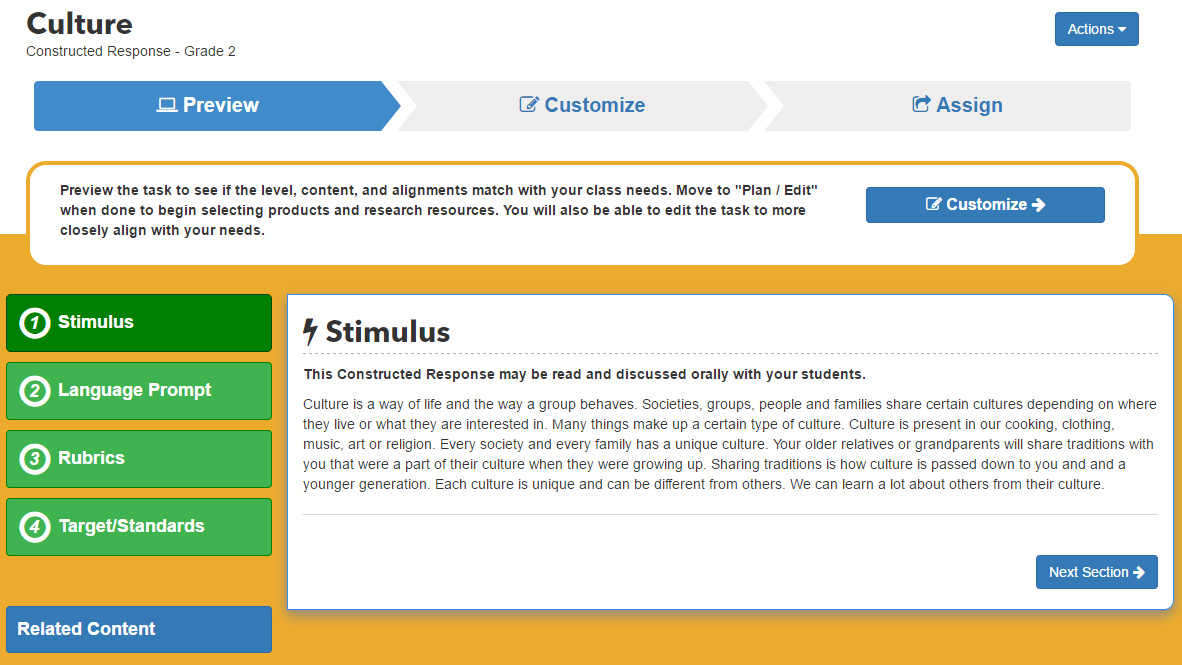
My Tasks
The Task Center allows you to customize and share performance tasks, literacy tasks, and constructed responses. Educators will have the ability to customize copies of an existing performance task to modify one of the Defined STEM tasks to fit their students' needs. Within the Task Center, you will be able to view any tasks that you have customized or shared/assigned to students. Educators can share tasks they have created with others within their building, district or a global sharing for all Defined STEM users. Task modifications are tracked and educators will be given citational credit when other users copy/edit a task.
Overview
- Teachers should aim to do 1-2 performance tasks a semester.
- Teachers should use the product videos to introduce and EXCITE students about each product. This can be done as a whole group, done individually, or in pairs at centers.
- Teachers can assign or differentiate with any combination or all of the products based upon content or learning levels.
- Teachers should begin each task with an illustration to tap into the students' prior knowledge about the content matter.
- Teachers should culminate each task with a journal prompt which can serve as a project piece for the teacher as well as a literacy component for the task.
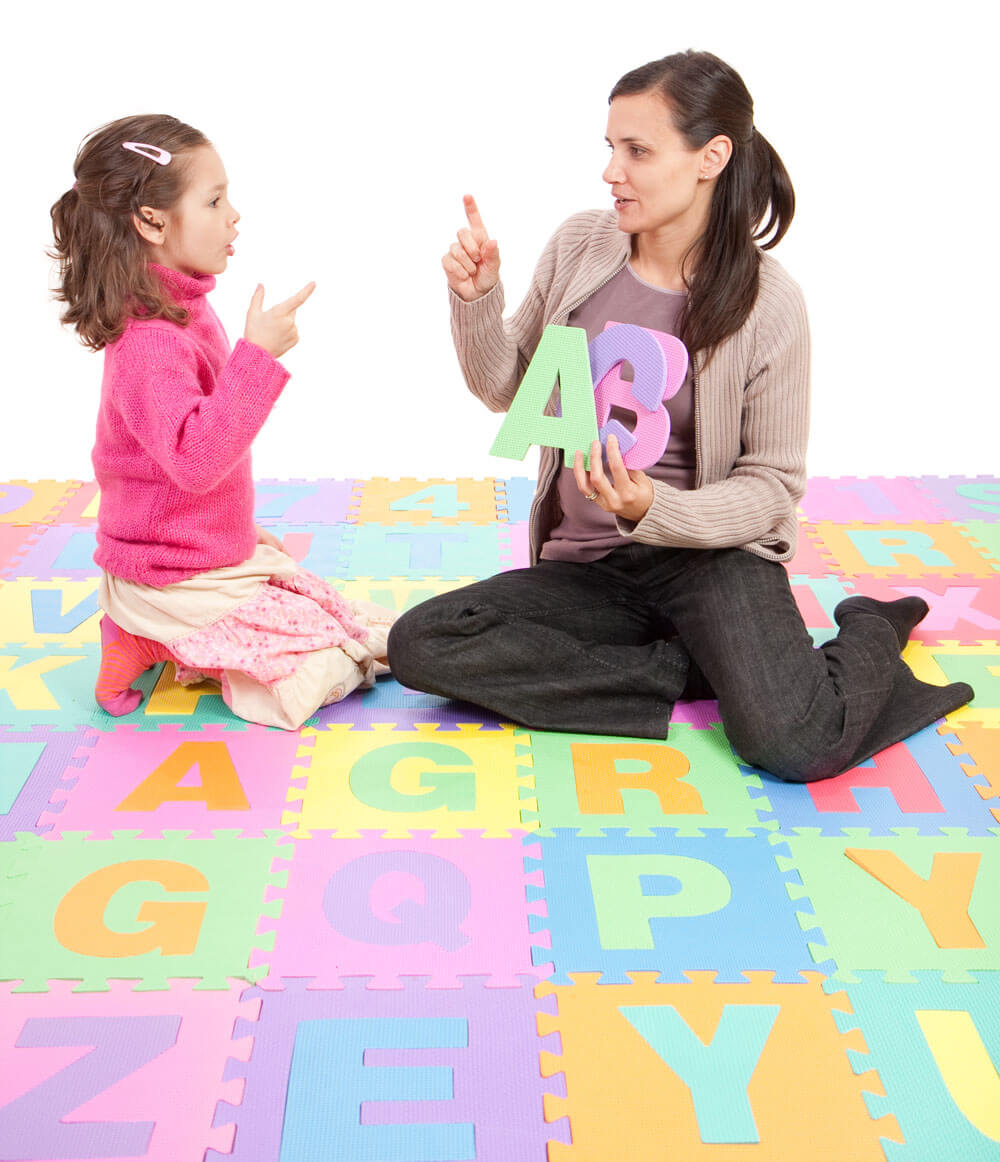
Product and Performance Tasks
Students can complete products independently or products can be done orally with a group or with the teacher. Products can be done in centers, as a whole class, or with a small group or team. Products can also be completed as homework. The links to performance tasks can be shared with parents electronically or print-outs can be sent home for students and families. Performance tasks have 1-2 constructed responses that align with the task. These constructed responses not only organically integrate reading and writing standards, but also define concepts and provide content support. Performance tasks are designed so they can be woven into existing curriculum. For example, if a teacher were teaching a unit on Weather, they may choose to integrate the Weather Reporter performance task into that unit. Another strategy is to designate a certain time each week to working on performance tasks. For example, a teacher may implement "STEM Fridays" where students devote Friday afternoons to exploring and experiencing performance tasks.
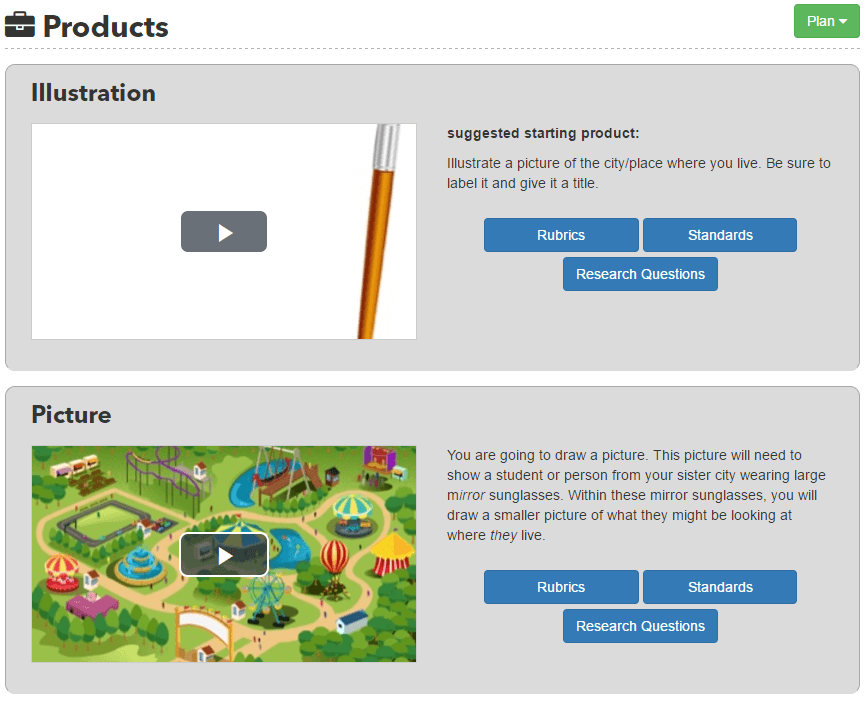
Culminating Unit Activity
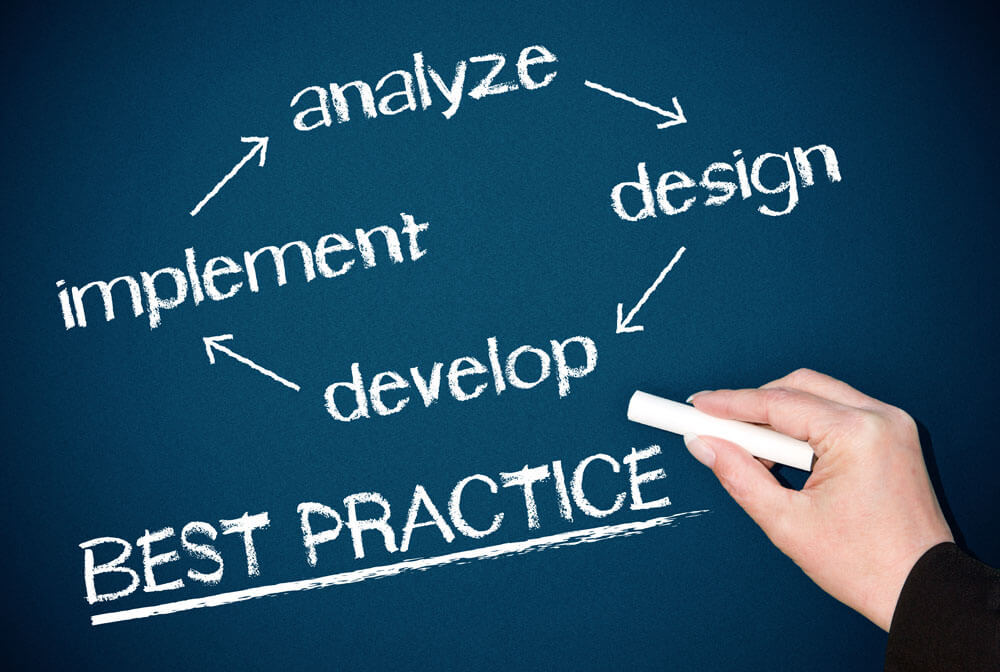
The performance task presents a problem that is tied to a primary academic standard. The task connects with numerous other academic standards as well. The task contains a number of products that require the student to demonstrate understandings of the academic standard(s). Additionally, through the task the students are answering one or more essential questions that address a big idea. Rubrics are contained within the task to help the educator assess student understanding. The task can serve as the primary or supplementary project for student knowledge and skill development.
Interdisciplinary Unit/Cross-Curricular Teaching
The performance task and associated content provide opportunities for students to build their knowledge and skills and understand how the academic areas connect. The tasks provide great opportunities for team teaching and/or culminating activities that can be shared across subjects. Through product creation, students will be required to utilize technology, the arts, and language arts to complete a majority of the tasks with STEM as the central content. Through the application of 21st century learning and skills, students are engaging in a holistic learning experience designed to help them succeed beyond school.
Independent Learning
The performance task and associated products can be utilized based upon student learning level. The videos and learning connections can provide opportunities for students to link their learning with real-life applications and potential careers. The products within the tasks can be adapted based upon the multiple intelligences or the needs of the individual student. The tasks are strongly aligned with 21st century content and skill development and require the use of technology as part of the product development process. Tasks can help provide motivation for student learning as well as help students understand why they need to learn certain content and skills. The inclusion of simulations can help the student understand concepts in an independent environment. Educators may facilitate the learning experience, serve as a guide to student learning, or allow the students to work and complete the task independently.
Enrichment
Defined STEM and the associated learning resources can be utilized to extend learning for student enrichment by addressing content area learning while also providing the ability for student autonomy. The videos and learning connections provide background information to help the student gain a foundational understanding of specific skills, content, and applications that are to be addressed. The product development process aligns with numerous multiple intelligences and has the student working to demonstrate understanding. Additionally, many of the products created will require the utilization of technology and are closely aligned with 21st century content and skill development. The experiences can be created through classroom learning centers, through differentiated product and process strategies, and by extending the classroom walls.
Summative Project
The performance task and connected content may serve as a summative project to monitor student understanding. The task would be best utilized as a culminating activity as part of a larger project process that includes formative project and more traditional summative projects. As traditional testing methods measure content and concept knowledge, the performance task requires students to demonstrate understanding of content and concept relevance as part of a holistic learning application.
Flip Classroom
As opposed to using the traditional strategy of using classroom time to provide lecture and foundational content experience followed by drill and practice as homework, students watch lectures at home through technological tools as well as gain foundational knowledge through textbook and associated resources. Class time is then utilized to work on projects, problems, and products through individualized and group work. This allows students to use class time actively and utilize the educator as a critical facilitator guiding learning and the application of new knowledge and skills.
